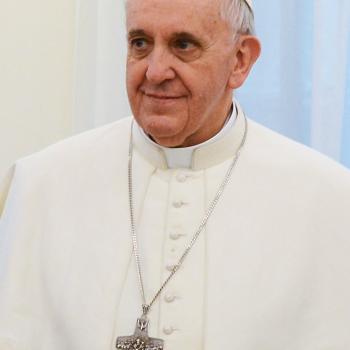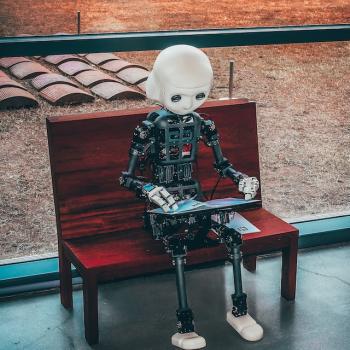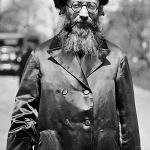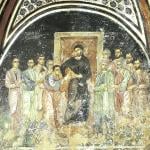I have become fascinated by the uses of persuasions, and of language in particular, to express an imaginative, creative ideal claiming to be a channel toward salvation from formidable, seductive, but ultimately empty moral temptations: rhetoric as an ethical and an instrumental discipline, “struggling” against a “debasement” of “reality” partly through the “upholding” of language. Narrative form, this is to say, can instruct and persuade. I think there has been something of an abandonment of a serious, humanistic search for truth and knowledge for the chasing of science, relativism, semantic games, and an assumption there is nothing beyond the scope of method, thus misusing language by a turn toward scientific, observational thinking and patterns. A “constitutive” rhetoric, though, is able to form, present, and explain value…..James Boyd White’s When Words Lose Their Meaning is one of the best books I’ve read in some time.
To call a rhetoric “constitutive” means, I think, to identity a persuasion of writing, speaking, persona, body language, lifestyle, and so on, that defines and “makes real” a culture in language and its performance. A spoken word, therefore, is a definition of a character for the speaker and at least one other, the audience, forming a community through a language provided by culture and modified by use. The audience “lives inside” the rhetoric as a part of the discourse. One primary concern of constitutive rhetoric as White understands it is the working of this complex process, the constitution of a social world full of colorful, memorable persuasion.
Rhetorical discourse, responding to the behavior of people, is transformed through material consequence: material is neither the antecedent conditions for rhetoric nor the discourse itself; it is the effect of discourse that is materially real. A model of constitutive rhetoric might resemble a social practice of communication where such social practices are embedded in the language, a language shaping its participants and in turn being shaped by them. The social practice of discourse and persuasion is intimately connected to culture and cultural change. Audience members are not “free agents” awaiting persuasion, existing “outside” rhetoric. Emerging narratives and prompts to action affirm an identity “created” as a constitutive social force. By emphasizing the influence of culture and discourse, constitutive rhetoric can position the natural world as something that is passive and malleable in relation to human beings. The constitutive finds the nonlinguistic in need of an ordering through discourse; it is skeptical of claims of scientific, objective knowledge that might serve as a basis for subjugation and silencing.
Perhaps all of the possibilities of meaning are already encoded in the history of language, its usage, in the history of the culture and its contextualizing, and in the history of society and its constraints. If so, the effects of discursive practice function constitutively when there is a condition of possibility to shape, but not necessarily determine, something in the realm of the “real world.” This does not occur “objectively” for the constitutive rhetorician, but referentially and subjectively – and unfortunately, that “useful invention,” objectivity, has become something of a tyrannical machine that constitutes what it should only enable. The “constitutive capacities” of discursive practices as extended to legal scholarship and literature is the investigative project of White. I follow his definition of constitutive rhetoric as my own: the persuasive art and the actual activity of constituting culture, character, and community in language.
In probing the relation that a speaker establishes with language, White suggests imagining that the world of text is a real world. By ascertaining a sense of the relationship that exists between the speaker and the materials of the culture, “we can experience from the inside, with the intimacy of the artisan, if only in a tentative and momentary way, the life of the language that makes a world.” This is an invitation for the reader to exist as a character in the world created by the text. A text, according to White, is largely about the ways in which its reader will be changed by reading it. His method of reading is defined generously so as to include “writing and speaking, indeed all the ways we have of living with language and with each other through language; and it is about a ‘way of reading’ conceived of not merely as a method of analysis but as a way of attending and responding to a text and a situation, of acting and being in relation to language and to other people.”
His insight here is an “invitation” to partake in his conceptions, manners, values, and expectations as a critical reader of texts from eight literary and historical subjects. The book’s methodological method takes the role of argument to a culture – into the way in which the imaginative employment of the ‘rhetorical resources’ of a culture operate to criticize and transform that culture. The reader is “offered” a language and a set of assumptions from which a community of value can be constituted, maintained, defended. There is an intimate connection between the organization of language and the organization of community – between “text” and “constitution” broadly defined – and also between both of these and the organization of the individual mind.
White advocates for an “imagination” at work within a context, a recognition and criticism of the cultural environment, the language, and the mythic environment. From inherited and developing cultural sentiments and impressions, the constitutive rhetorician builds a cultural language which presents the possibility of restoration – of self and community. A persuader must accept that fact that there are real and important differences among cultures, and it is necessary to engage in a process of meaning-making and community-building of which they are, in part, the subject. Rhetoric is specific to its material: the knowledge out of which the rhetorician ultimately functions will not be scientific or theoretical but practical. This is an early social and intellectual knowledge, acquired as humanity first begins to act in a social universe, speaking and understanding others. It is a knowledge by which language and social relations develop.
When an author “represents” through a text, the language constitutes individuals, values, and cultures, but not in a coercive manner. Readers possess the agency by which they are able to use language to gain meaning or lose meaning, to constitute or reconstitute their identity, community, and culture. White envisions rhetoric as an art by which culture and community are established, maintained, and transformed. It is a process through which individuals and communities form and maintain their identities. Within communities formed by rhetoric, a constitutive rhetorical appeal takes note of the structural reciprocity between language and the character. Each person is partly “made” by language. This manner of communication presents categories through which the world is perceived and motives are developed. Yet humans are also users and makers of language; and in the remaking of life and internal character there is necessarily a shared, collective process. White writes, “The reciprocity I speak of thus is defined by our language – our language is the set of shared expectations and common terms that enable us to think of ourselves as a ‘we’ – and that language too can be transformed.” Humans, in their communicative acts, create social settings. This is a conduit through which persons form relationships.
Communication in constitutive rhetoric is reflexively constituted within the act itself, forming and reforming identity, social relationships, and ideas. Persuasion is necessarily impacted by cultural and economic evolutions, as social practices are inseparable from language. In this continuous creation are occasions where an individual might remake what White terms the “shared resources of meaning,” which shapes the scope and direction of public and communal life. Language, it follows, is not stationary. In this flux of reading, of words and symbols, he has worked out (drawing from the textual criticism of his book) a technique of reading that focuses attention on the nature of the language a particular writer or speaker has inherited, on the way the author acts upon this language as a modifier, and on the nature of the social and ethical relations that the author establishes with the reader, those whom are written about, and with the natural world. Language “weaves into” a way of thinking among readers, facilitating an acceptance of sentiments and assumptions.
Through “constitutions” and “reconstitutions,” constitutive rhetoric can produce and mold identity, change the character of the audience, and help to form organizations and social movements. Identity will not always be a “given.” The text is action with words; the engaged audience is not internally stationary. The text creates and awakens actions: “the writer always makes a community with another in his text, and this community has a life and character of its own. To attend to this fact is to raise all the questions that such relations present: the nature of friendship, justice, and generosity, the way that the self and its interests are defined in relation to others, and what it means to try to form a social world that is better for both.” The author of a text acts with words to create, criticize, and recreate relations at two levels: that which the author establishes within the text between characters, and the relation that the author attempts to establish with the reader. Depending upon the linguistic conventions and rhetorical resources, this relation might vary from the slyly manipulative to the didactic to the dialectical and genuinely educative.
I think White’s concern is not so much the ways in which language “loses” its meaning, but the ways in which authors can “transform” their use of language and “give” their persuasions new kinds of meaning in communion with an audience.
What happens next after a meaning is “lost,” and how can an audience respond to that loss? White states that the experience of loss is often definitional in the life of a person, and perhaps in the life of a culture. In those moments, there is a realization that “language cannot work in the simple and unproblematic way one had theretofore imagined, and more deeply, that the sense of harmony between one’s self and one’s culture, the sense of belonging in a world in which you say and think what others do, is broken beyond repair.” People think about the matter of “dead and living language” on either of two assumptions. First, that words themselves carry their own meanings, and the task is to arrange them in sequences that will have the same significance, in any utterance and in any context. Second, that words have the potential of meaning, and that it is our opportunity and task to give them specific significances through usage. Words are not static units of meaning. Instead, words and phrases develop meaning through interaction with language, culture, and situation. Language, character, and culture, inextricably bound together, are tools used by the constitutive rhetorician to express an “integrated” view of the world.
Because there is so much reality that will remain hidden, there is much that language cannot adequately capture: uncertainty, suffering, frustration, the sense of the story from another point of view – all will be conveyed only with loss or distortion. One task of constitutive rhetoric is to “talk” about these experiences. This requires thinking about the language itself: what it can do and what it can be made to do, as well as its limitations: “All this is a call to invention, to reimagining the world, not to the routine application of rules or principles.” For White, literature “at its best is always about the language in which it is written, its ways of imagining the experience of others, its response to the conventions of authority with which it works, and so on.” To seriously engage the language of a text is to commit to an imagination of a world where certain declarations of significance are possible and others impossible. As such, the use of language is an ethical and political activity, “as we define ourselves and those we speak about in what we say.”
To grant a common culture, ethical and intellectual, so that a people may share a general heritage and be united through the works of the mind, a goal, I think, of “postmodern conservatives,” is to engage in the constitutive.
I think of the constitutive here as having “two elements:” broadly, the cultural and the ethical. The first element is the uses of language acting in the light of linguistic inheritance, which modifies all who speak, hear, read, or write. Humans are responsible for these changes and preservations, hopefully toward a “good” language and culture conducive to community. The second element is what is “granted” by speaking, writing, reading, hearing, and observing discourse. These “ethical stances” extend to public life, defining relationship, and are also ideally orientated toward a “good” order. It is of little matter if those engaged in communication are “thinking” about these processes; by engaging, they act constitutively. The “constitutive” as I use it here is a term of description for deconstructing the ways and contents of these actions, where rhetoric is situated in culture and performance rather than in the exchanges of an audience and speaker.
In studying the language that a speaker is given by a culture, the relation a speaker establishes with a language (what is a language “doing” and what is being “done” to it), and the relation a speaker establishes with others, persuading others to confront, for example, a cultural or spiritual crisis requires “speaking” to premises accepted by an audience. The elements of communication are not “fixed” in advance. There are ongoing definitions of action, reaction, and symbolism that form and reform identity, a hard to define changing social of relations. To draw an audience in to shared assumptions and biases, an act of constitutive rhetoric, begins with an embedded culture present in any audience.
In short, get a hold of this outstanding book.
















